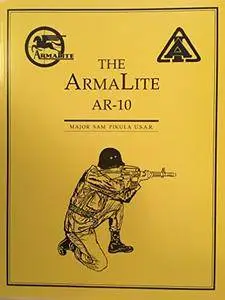The ArmaLite AR-10 Rifle: The Saga of the First Modern Combat Rifle by Sam Pikula
English | 2017 | ASIN: B0723C9CJ9 | 211 Pages | AZW3 | 1.5 MB
English | 2017 | ASIN: B0723C9CJ9 | 211 Pages | AZW3 | 1.5 MB
The very first book written on the subject of the original ArmaLite AR-10, Major Sam Pikula's highly sought after and classic text on the history and design of this legendary rifle is finally back! The first printing in 1998 was a limited run of 500 books. Over the years the demand for this work was so great that when somebody could be induced to part with their treasured copy it frequently sold for $300 to $400 US dollars! Not written exclusively from the confines of only a firearms enthusiast or hobbyist, Major Pikula has served as Special Forces officer and armed security contractor "boots on the ground" in some of the most dangerous places in the Mideast and evaluates the AR-10 accordingly. In extensive tests and use of the AR-10 he has literally worn out barrels exploring this groundbreaking and historical infantry weapon. To qoute from the books preface:
“Most firearms enthusiast’s know very little if anything about the ArmaLite AR-10 series of rifles. Few have even seen an AR-10 much less owned or fired one. This is unfortunate as the AR-10 was as much of a groundbreaking weapon as the Thompson Sub-Machine Gun, M-1 Garand, or the 1898 Model Mauser Rifle. Until the AR-10, half of a rifle consisted of a dead tree, and the other half was made of steel on the verge of oxidizing. The AR-10 ions the first standard infantry rifle to be constructed using plastic instead of wood for the stocks, pistol grip, and handguards, and the first to use rust proof aircraft aluminum in the receivers.
The AR-10 also maximized the use of ergonomics i.e. adapting the design to suit the human structure thereby increasing efficiency and reducing strain. While it is common to see military rifles today utilizing plastic stocks, in-line recoil designs, and non-ferrous metals, these features were a radical innovation when introduced in the 1950’s. Just how innovative can be best illustrated in this manner. Take an AR-10 manufactured in 1960 and place it next to “an AR-10 produced in 1960?



